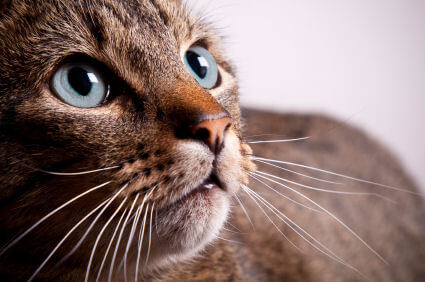Pet Tips
Here’s What Your Cat’s Whiskers Actually Do
If there’s one way that all cats are similar to each other, it is because they all have whiskers. Regardless of your cat’s breed or age, whiskers are an important part of almost every cat’s lives. Read on for a better understanding on how whiskers can help your cat!
What are cat whiskers?
A whisker is a specialized hair on your cat’s body, but these stand out because they’re much thicker than normal fur. However, what truly makes them whiskers is the fact that they are highly sensitive because of the deep roots they have in the cat’s skin, coupled with a well-networked blood vessels. Whiskers have a huge role in navigation and hunting prey, and cats can use movement in the air to alert themselves to potential prey or predators.
Facts about cat whiskers
Your cat’s whiskers are more than just strong hair – here are some interesting facts about whiskers.
- Cat whiskers shed over time, this is completely natural.
- Typically, whiskers are arranged in four rows on your cat’s nose.
- Cat whiskers can potentially change in color over time.
- The whiskers on the cat’s face are under the control of muscles, and hence effected by the emotion that your cat is experiencing.
- Some cats may have whiskers that are more than one color.
- Damaged whiskers will typically grow back after some period of time.
- Whiskers may be curled in some cat breeds.
- Whisker fatigue occurs when whiskers constantly touch a surface (such as a narrow bowl)
What are some of the things that whiskers do?
Not only do whiskers make your cat look like an adorable little fur ball, whiskers can also help your cat accomplish a lot of interesting behaviors:
- Hunting prey: Most cats are farsighted – this may be a weakness, but cats compensate with their hyper sensitive whiskers. By detecting the movements in the air around them, cats can catch their prey with significant accuracy.
- Understanding space: Using whiskers, cats can understand spaces better – narrow spaces cause their whiskers to turn, which they can detect when deciding whether it is safe to enter inside or not.
- Expression: Aside from detecting prey, cats also use their whiskers to tell each other and their humans more about what they feel. Depending on the position of the whiskers, the cat may be relaxed, excited, or even angry.
Should whiskers be trimmed?
Unlike some of the other parts of your cat’s body, such as the nails, whiskers don’t need to be trimmed. In fact, you may be doing your cat a disservice by cutting off its whiskers – as mentioned above, these hyper-sensitive hair are very important for your cat to understand its surroundings and be aware of any incoming dangers.
Your cat uses its whiskers to become the agile, apex predator that it is. By providing it with a good diet and a generally healthy lifestyle, you are ensuring its health, long life, and whiskers that will keep it well aware of its surroundings.

